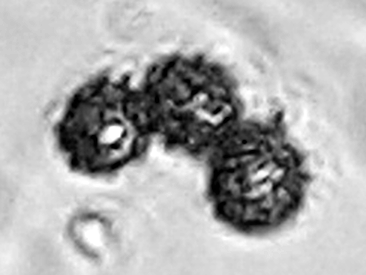Russula Atropurpurea on:
[Wikipedia]
[Google]
[Amazon]
''Russula atropurpurea'' is an
 The cap is in diameter. It is dark reddish purple, with a dark; sometimes almost black centre. At first it is convex, but later flattens, and often has a shallow depression. It can also be lighter in colour, or mottled yellowish. The
The cap is in diameter. It is dark reddish purple, with a dark; sometimes almost black centre. At first it is convex, but later flattens, and often has a shallow depression. It can also be lighter in colour, or mottled yellowish. The
 The spore print is Whitish, and the subglobose to globose spores ornamented with warts and ridges measure 7-9 x 6-7 μm.
The spore print is Whitish, and the subglobose to globose spores ornamented with warts and ridges measure 7-9 x 6-7 μm.
edible
An edible item is any item that is safe for humans to eat. "Edible" is differentiated from "eatable" because it does not indicate how an item tastes, only whether it is fit to be eaten. Nonpoisonous items found in nature – such as some mushroo ...
member of the genus '' Russula''. It is dark vinaceous (red wine-coloured) or purple, and grows with deciduous
In the fields of horticulture and Botany, the term ''deciduous'' () means "falling off at maturity" and "tending to fall off", in reference to trees and shrubs that seasonally shed leaves, usually in the autumn; to the shedding of petals, aft ...
, or occasionally coniferous
Conifers are a group of cone-bearing seed plants, a subset of gymnosperms. Scientifically, they make up the division Pinophyta (), also known as Coniferophyta () or Coniferae. The division contains a single extant class, Pinopsida. All extant ...
trees. It is commonly called the blackish purple Russula, or the purple brittlegill.
Taxonomy
Initially described as ''Agaricus atropurpureus'' by German naturalist Julius von Krombholz in 1845, and placed in '' Russula'' by his countrymanMax Britzelmayr
Max Britzelmayr (7 January 1839 – 6 December 1909) was a German mycologist and lichenologist who was a native of Augsburg.
He spent his career as a schoolteacher and ''Kreisschulinspektor'' (school district administrator) in Augsburg. He is k ...
in 1893, the binomial name of this mushroom ''R. atropurpurea'' (Krombh.) Britzelm is accepted as being incorrect, and mycologists cannot agree on a suitable replacement.
Distribution and habitat
''Russula atropurpurea'' appears in late summer and autumn. It is common in the northerntemperate
In geography, the temperate climates of Earth occur in the middle latitudes (23.5° to 66.5° N/S of Equator), which span between the tropics and the polar regions of Earth. These zones generally have wider temperature ranges throughout t ...
zones, Europe, Asia, and Eastern North America, and is mycorrhizal
A mycorrhiza (from Greek μύκης ', "fungus", and ῥίζα ', "root"; pl. mycorrhizae, mycorrhiza or mycorrhizas) is a symbiotic association between a fungus and a plant. The term mycorrhiza refers to the role of the fungus in the plan ...
with oak (''Quercus
An oak is a tree or shrub in the genus ''Quercus'' (; Latin "oak tree") of the beech family, Fagaceae. There are approximately 500 extant species of oaks. The common name "oak" also appears in the names of species in related genera, notably '' ...
''), with which it prefers to live. Favouring acid soil, it is occasionally found with beech ('' Fagus''), or pine ('' Pinus'').
Description
 The cap is in diameter. It is dark reddish purple, with a dark; sometimes almost black centre. At first it is convex, but later flattens, and often has a shallow depression. It can also be lighter in colour, or mottled yellowish. The
The cap is in diameter. It is dark reddish purple, with a dark; sometimes almost black centre. At first it is convex, but later flattens, and often has a shallow depression. It can also be lighter in colour, or mottled yellowish. The stem
Stem or STEM may refer to:
Plant structures
* Plant stem, a plant's aboveground axis, made of vascular tissue, off which leaves and flowers hang
* Stipe (botany), a stalk to support some other structure
* Stipe (mycology), the stem of a mushro ...
is firm, white, and turns grey with age. It measures 3–6 cm in length and 1–2 cm in diameter. The closely set and fairly broad gills are adnexed to almost free, and pale cream, giving a spore print of the same colour. The flesh is white; with a fruity smell, similar to apples. It tastes moderately hot.
The species '' R. brunneviolacea'', and '' R. romellii'' are similar, though both have darker spore prints.
As the fruitbodies mature, the caps become concave to collect water during wet weather, and much of the color washes off the rim.
Spores
 The spore print is Whitish, and the subglobose to globose spores ornamented with warts and ridges measure 7-9 x 6-7 μm.
The spore print is Whitish, and the subglobose to globose spores ornamented with warts and ridges measure 7-9 x 6-7 μm.
Edibility
This mushroom is said to be the mildest of the hot-tasting ''Russula'' species. It isedible
An edible item is any item that is safe for humans to eat. "Edible" is differentiated from "eatable" because it does not indicate how an item tastes, only whether it is fit to be eaten. Nonpoisonous items found in nature – such as some mushroo ...
if cooked, although not recommended.
See also
* List of ''Russula'' speciesReferences
{{Taxonbar, from=Q1784190 Fungi of Europe atropurpurea Edible fungi